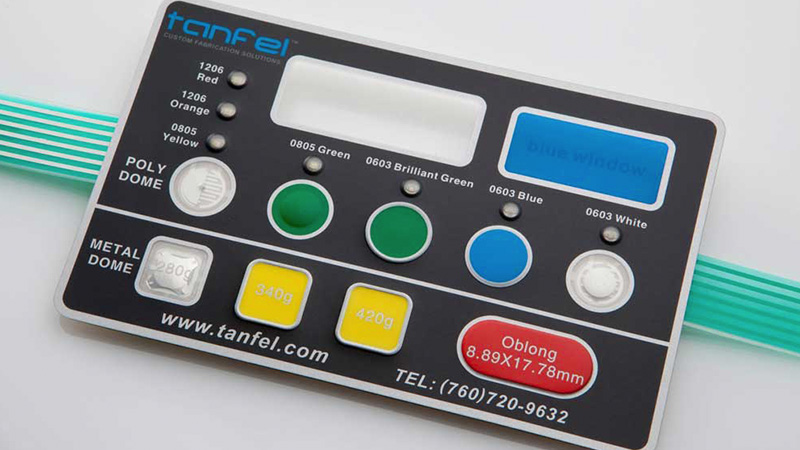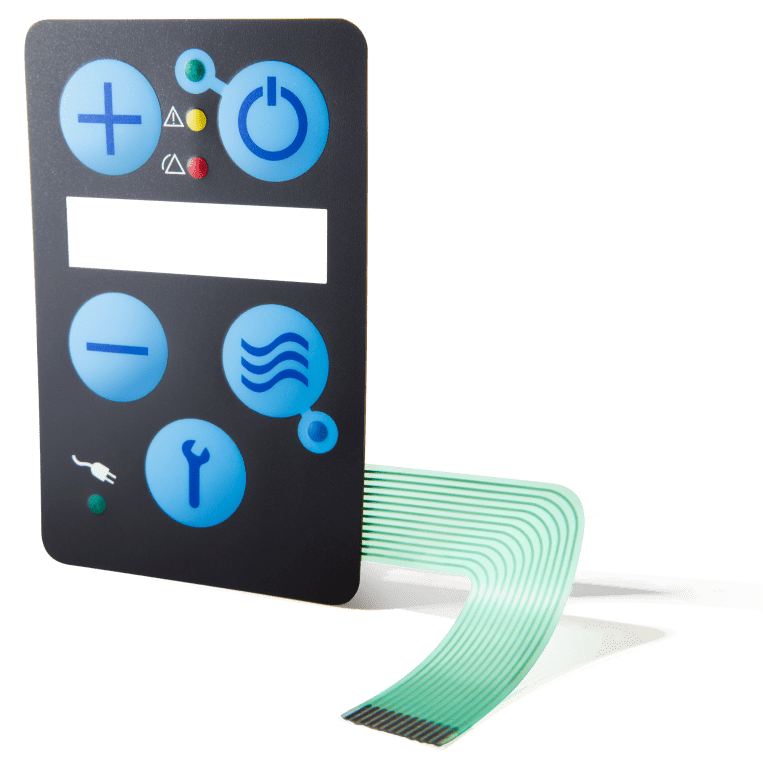Membrane Switch Over Modern Technology: The Trick to Dependable and Cost-efficient User Interfaces
Membrane switch innovation has emerged as a critical component in the layout of user interfaces, giving both dependability and cost-effectiveness throughout a varied array of applications. As we discover the complex advantages of membrane layer switches, their possibility for development increases questions concerning future applications and developing trends.
Recognizing Membrane Layer Switch Over Modern Technology
Membrane button innovation is a commonly used user interface remedy in numerous electronic gadgets, supplying a smooth mix of performance and style. This modern technology includes several layers of products, usually including a graphic overlay, spacer layer, and a circuit layer. The visuals overlay presents the user interface components, while the spacer layer separates the circuit layer from the overlay up until an individual activates a button.
When pressure is related to the overlay, the circuit layer completes the electrical circuit, sending out a signal to the gadget. This system allows for various configurations, consisting of tactile feedback and backlighting choices, boosting individual interaction. Membrane switches are typically produced using long lasting products such as polyester or polycarbonate, making certain long life and resistance to ecological elements like dampness and dirt.
The adaptability of membrane layer switches allows their application in varied markets, including medical tools, consumer electronic devices, and commercial controls. Their small style permits integration into space-constrained environments, offering a reliable user interface without jeopardizing visual allure. Understanding the intricacies of membrane switch modern technology is important for producers and designers looking for to produce reliable and efficient human-machine interfaces.
Key Benefits of Membrane Layer Buttons
While numerous user interface options exist, membrane layer switches over offer unique advantages that make them a favored choice in countless applications. One of the key advantages is their sturdiness; membrane switches are made to endure severe environmental problems, including dampness, dust, and temperature level variations, making certain long-lasting performance. This strength dramatically minimizes the need for constant substitutes, thus lowering total upkeep expenses.

Furthermore, membrane buttons are lightweight and compact, making them suitable for applications where area is restricted. Their low-profile style adds to a sleek appearance without jeopardizing capability.
Cost-effectiveness is likewise a notable benefit, as the manufacturing process for membrane switches over tends to be less expensive contrasted to typical mechanical buttons. This price, incorporated with their reliability and convenience of installment, placements membrane layer changes as a practical solution for a large range of industries looking for reliable and effective customer interfaces.
Applications Across Different Industries
Just how do membrane buttons adjust to the varied requirements of different industries? Membrane switch modern technology is significantly acknowledged for its versatility, making it suitable for a wide array of applications throughout multiple sectors.
In customer electronics, membrane layer switches supply a compact solution for push-button controls and home devices, boosting user experience via instinctive design. you can try these out In addition, the industrial sector leverages membrane buttons for equipment control board, taking advantage of their resistance to rough environments, such as dampness and dust.
Army and aerospace applications additionally utilize membrane layer switches for their integrity and ability to stand up to severe problems, making sure functional efficiency in vital scenarios. The food and beverage industry adopts these buttons for automated systems, where cleanliness and ease of procedure are vital (membrane switch). Ultimately, membrane layer switches are customized to meet the unique demands of each market, proving their necessary duty in modern-day innovation user interfaces
Style and Personalization Choices

In the world of membrane switch innovation, style and personalization choices play an essential role in enhancing performance and customer communication. These buttons can be customized to meet details operational needs and aesthetic preferences, making them functional elements in different applications.
Among the main modification choices is the layout of the switch itself, which can be made to suit one-of-a-kind interface and ergonomic factors to consider. By changing the shape, dimension, and plan of switches, makers can produce user-friendly styles that assist in simplicity of usage. In addition, the incorporation of different colors and visuals overlays permits for branding and improved exposure, making sure that users can quickly determine functions.
Furthermore, membrane switches can browse around these guys be engineered with different tactile feedback mechanisms, such as elevated buttons or distinct clicks, to enhance the customer experience. Various materials can also be chosen for toughness and ecological resistance, attending to factors such as wetness, temperature changes, and chemical direct exposure.
Eventually, the substantial layout and personalization alternatives available in membrane button technology empower services to produce customized options that not just satisfy functional requirements but additionally line up with their branding and operational needs.

Future Trends in Membrane Layer Buttons
As membrane layer button innovation remains to progress, future fads are increasingly focused on improving user experience and integrating innovative performances. One significant pattern is the integration of touch-sensitive and capacitive technologies right into typical membrane buttons. This growth permits for even more instinctive customer interfaces, giving tactile responses while maintaining a sleek design.
One more emerging pattern is using eco-friendly materials, driven by the expanding demand for lasting manufacturing techniques. Manufacturers are seeking to minimize their carbon footprint by using recyclable substrates and low-impact inks, lining up with international sustainability you can try this out goals.
Furthermore, the rise of the Net of Things (IoT) is prompting the consolidation of clever functions right into membrane switches. Boosted connectivity alternatives will allow tools to communicate with each other, permitting for smooth assimilation right into broader systems.
Furthermore, innovations in printing technologies, such as digital printing, are enabling higher design flexibility and modification. This enables producers to create elaborate designs and lively colors cost-effectively.

Conclusion
In final thought, membrane layer button technology represents a vital development in individual interface layout, providing considerable advantages in longevity, customization, and cost-effectiveness. Its prevalent applicability throughout diverse industries underscores its value in modern technology. As innovations remain to arise, specifically in touch-sensitive interfaces and lasting products, the capacity for membrane layer switches to improve customer experience and functionality continues to be appealing. Proceeded exploration of this technology will likely produce additionally enhancements and broaden its range in future applications.